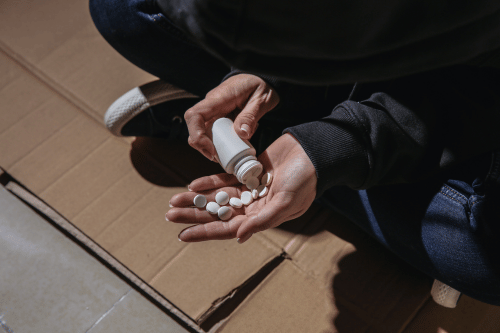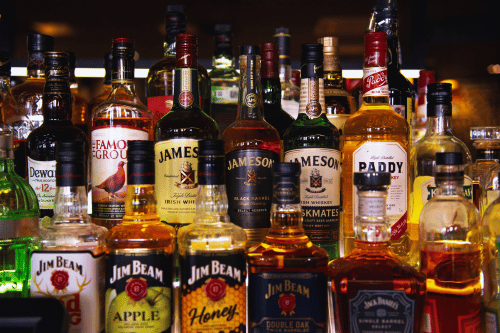

Teen drug abuse remains a major public health issue in the United States. What is the number one drug used by teens? According to the National Institute on Drug Abuse, alcohol is the most commonly used substance by adolescents, followed closely by marijuana, especially in the form of recreational marijuana and synthetic marijuana.
Understanding which drugs are most commonly abused by teens helps identify early signs of drug use and offer proper intervention. At Sullivan Recovery in Mission Viejo, we help teens and young adults facing substance use disorder through evidence-based outpatient treatment programs.
Alcohol is the leading drug of choice among teenagers in the U.S. According to national surveys of 8th graders, 10th graders, and 12th graders, alcohol use begins early and increases with age. This early exposure increases the risk of alcohol abuse, alcohol use disorder, and long-term health problems such as liver damage, mental health issues, and poor academic performance.
Frequent drinking during adolescence can impair the adolescent brain, especially areas involved in judgment, memory, and impulse control. It also disrupts emotional development and increases vulnerability to substance use disorder later in life. Alcohol use may also trigger or worsen existing mental health disorders, including depression and anxiety.
Many teens use alcohol to cope with academic pressure, peer pressure, or emotional pain stemming from personal or family history of substance abuse. This coping strategy is harmful and often leads to increased risk-taking, violent behavior, and risky decision-making. Without professional treatment, patterns of underage drinking can continue into adulthood, leading to long-term dependence.

While alcohol is legal for adults, marijuana is the top illicit drug used by teens. This includes both recreational marijuana and synthetic marijuana products. These substances can have serious effects on the teenage brain, disrupting learning, attention span, and emotional regulation.
Data shows a significant increase in marijuana use among 12th grade students, especially in states with legal recreational sales. Many teens falsely believe marijuana is safe, unaware of the long-term effects like mental health issues, poor academic performance, and cannabis use disorder.
Several risk factors influence teen drug abuse. These include family history of addiction, trauma, mental health disorders, and peer pressure. Teens may use drugs to boost athletic performance, ease physical pain, or escape from emotional struggles.
Easy availability of drugs through social media, parties, and friends also plays a major role. Private schools and suburban neighborhoods aren’t immune to this issue—school students across all backgrounds face pressure and exposure.
Many teens misuse prescription medications thinking they are safer than street drugs. Commonly misused types include prescription pain medications, stimulant drugs for ADHD, and anti-anxiety pills. These are often taken without a doctor’s prescription.
Misuse of prescription drug types can lead to severe side effects, substance abuse issues, and even fatal overdose deaths. The rise in prescription drug misuse highlights the need for medical professionals and parents to closely monitor medications at home.

Synthetic marijuana is one of the most dangerous abused drugs among teens. Marketed under names like K2 or Spice, it is often mislabeled as safe or natural. In reality, it contains toxic chemicals that can cause violent behavior, chest pain, seizures, and even death.
Unlike natural cannabis, synthetic versions are unregulated and unpredictable. These illicit substances are often easy for teens to get and can be more harmful than traditional illegal drug options.
Drug use impacts every part of a teen’s life—from academic performance to mental health and physical health. It can cause mood swings, secretive behavior, and problems with concentration. Teens using substances may also experience dilated pupils, changes in body temperature, and erratic behavior.
Drug use often leads to isolation from family and friends. In many cases, it opens the door to violent behavior, legal trouble, and future substance use disorder in adulthood.
Teen drug use is closely tied to mental health issues. Many adolescents self-medicate to deal with anxiety, depression, or trauma. But this can worsen existing symptoms or trigger new mental health problems.
Early drug use can permanently alter brain development, especially during critical periods of adolescence. This creates lifelong challenges with impulse control, stress management, and emotional regulation.
Peer pressure is one of the top reasons teens start using drugs. Many teens feel they must conform to group behaviors to gain social approval. This is especially true during high school years, including 10th grade students and 12th grade students.
Teens who lack strong parental support or positive role models are more likely to give in to peer influence. Prevention strategies need to target these social dynamics before substance use begins.

A teen’s family history can increase the likelihood of developing a substance use disorder. Children of parents with alcohol use disorder or drug addiction are more likely to experiment with drugs themselves. Genetics, combined with environmental exposure, creates a high-risk environment.
Families play a vital role in prevention. Talking openly about addiction, maintaining boundaries, and modeling healthy coping strategies can help reduce risk.
Look for behavioral and physical signs of drug use, such as sudden mood swings, withdrawal from family, or missing school. Physical signs can include red eyes, weight changes, and changes in body temperature or blood pressure.
Many teens will deny using drugs. That’s why it’s important for parents and teachers to stay observant and maintain open communication. Early action is the key to recovery.
Many teens don’t stick to a single drug. It’s common for adolescents to combine substances, such as alcohol with marijuana or prescription medications. This significantly increases the risk of overdose and unpredictable adverse effects.
Polydrug use is especially dangerous because it can mask the intensity of symptoms, leading teens to take more than their bodies can handle.
Substance use during adolescence can cause permanent damage to both brain and body. These long-term effects include reduced cognitive function, impaired memory, and difficulty with learning or decision-making. Drug use can also lead to chronic pain, sleep problems, and weakened physical health, especially when combined with poor nutrition or lack of medical care.
Teens who misuse substances face higher risks of developing mental health disorders like anxiety, depression, and PTSD. Substance use also affects social development, often resulting in damaged relationships, isolation, and poor communication skills. These issues can follow them into adulthood, causing problems in employment, education, and overall quality of life.
Without professional treatment, these patterns can carry into adulthood, leading to drug addiction, ongoing substance abuse, and increased risk of overdose deaths. Many adults in recovery report their addiction began with adolescent substance use, showing how early intervention is essential for breaking the cycle..
Teens struggling with addiction need structured treatment options. Outpatient programs like those at Sullivan Recovery provide medical detox, counseling, and support without pulling the teen away from school or family life.
We work with medical professionals to address both physical pain and emotional pain, while also treating co-occurring mental health disorders.

Treatment often includes individual therapy, family therapy, and peer support groups. These services help repair damaged relationships and build new coping skills. The U.S. Department of Health and Human Services recommends early, sustained intervention to reduce relapse risk.
At Sullivan Recovery, we guide each teen through a structured recovery plan, helping them get back on track mentally, emotionally, and physically.
Drug prevention must begin early—before drug use begins. Educating school students, especially in 8th grade, 10th grade, and 12th grade, about the harmful effects of drugs is crucial. Programs should focus on resilience, communication, and resisting peer pressure.
Parents, schools, and communities must work together to limit the availability of drugs and create supportive environments that discourage teenage drug abuse.
Overcoming teen drug use takes a village. Recovery includes building a strong support network of parents, friends, mentors, and professionals. Programs like Sullivan Recovery in Orange County combine medical detox with ongoing outpatient care.
We help teens manage cravings, cope with stress, and rebuild healthy routines after addiction.
Understanding what is the number one drug used by teens gives parents, educators, and treatment providers a starting point for action. Alcohol remains the most commonly used substance, followed closely by marijuana and synthetic marijuana. These substances often lead to deeper problems, including substance abuse, legal issues, and long-term health risks.
At Sullivan Recovery, we support teens struggling with addiction by offering evidence-based care in an outpatient setting. Whether your teen is using prescription medications, alcohol, or illicit substances, our team of medical professionals can help. Reach out today to learn more about our treatment programs and how we can support your teen’s recovery.
1. National Institute on Drug Abuse (NIDA): https://nida.nih.gov/publications/drugfacts/monitoring-the-future-survey-high-school-youth-trends
2. Substance Abuse and Mental Health Services Administration (SAMHSA): https://www.samhsa.gov/data/report/2021-nsduh-detailed-tables
3. Centers for Disease Control and Prevention (CDC): https://www.cdc.gov/alcohol/fact-sheets/underage-drinking.htm
4. U.S. Department of Health and Human Services (HHS): https://health.gov/our-work/nutrition-physical-activity/physical-activity-guidelines/adolescents
At Sullivan Recovery, as an in-network provider we work with most insurance plans, such as:
And More
If you or a loved one are struggling with mental health challenges or substance abuse, reach out to Sullivan Recovery today. Our team of compassionate professionals is here to support your journey towards lasting well-being. Give us a call at 949-836-7180.
Most teens begin experimenting with drugs or alcohol between the ages of 12 and 14. Early exposure often occurs during middle school and increases in high school. Prevention efforts are most effective when they begin before age 12.
Social media can normalize teen drug use by showcasing content that glamorizes substances like recreational marijuana or alcohol. Some teens also use platforms to find illicit substances or connect with others who use drugs. These online influences often reinforce peer pressure and risky behavior.
Yes, while drug use occurs in both settings, some studies suggest that teens in private schools may have higher rates of prescription drug misuse due to academic competition and easier access. However, availability of drugs and risk factors like academic pressure and family history affect students across all school types.
Parents play a critical role by maintaining open communication, setting clear rules, and staying involved in their teen’s life. Monitoring behavior, limiting access to prescription medications, and educating teens about the harmful effects of drug use can significantly reduce the likelihood of teenage drug abuse.